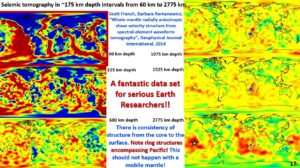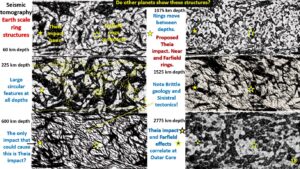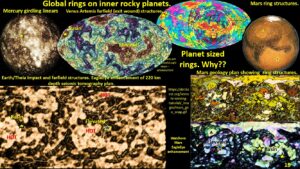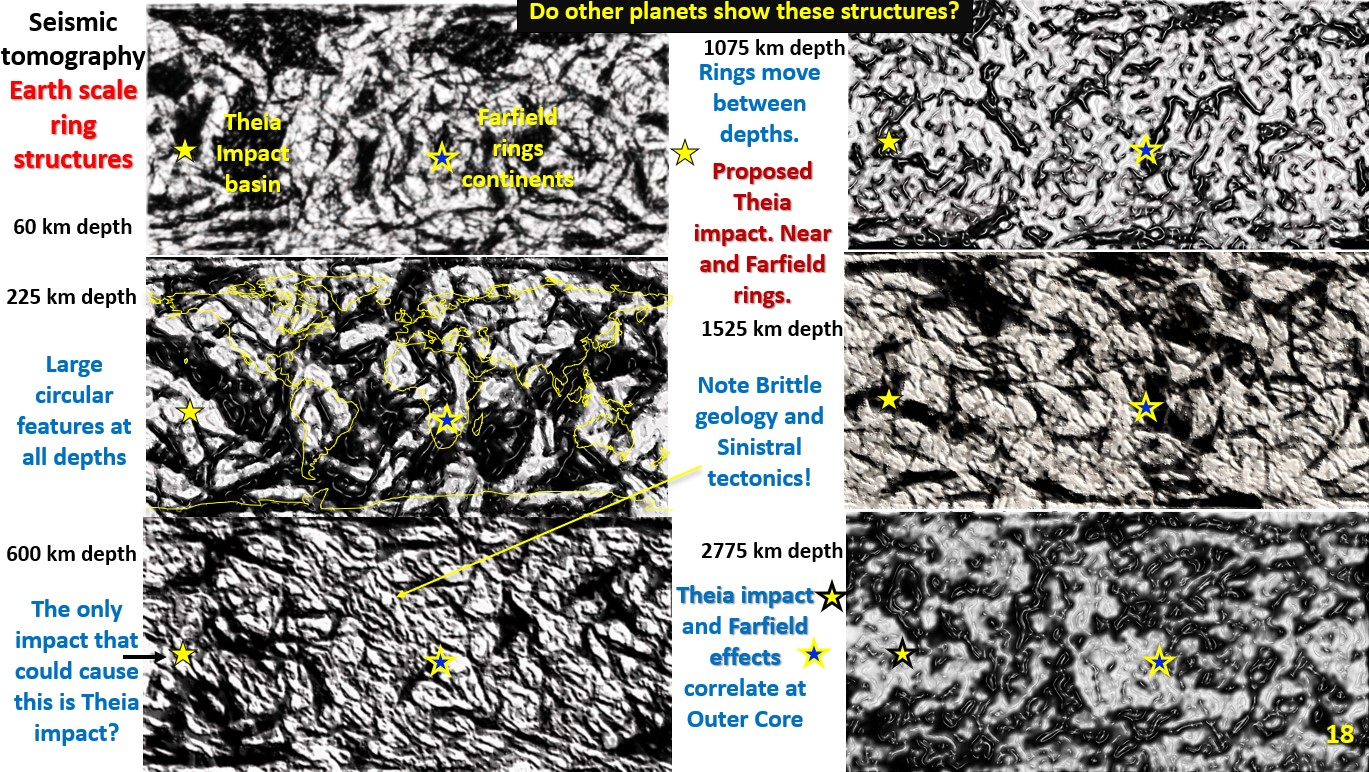What do these giant ring structures look like in plan view?
Are they caused by the earliest massive bombardment at 4.57 Ga?
The AusIMM webinar I did on this new research can be seen on the AusIMM website or on https://www.youtube.com/watch?v=snu8En442Js

I used the above fantastic set of seismic tomography data from French and Romanowicz, 2014, as the base set of data for this research. Even in the unenhanced data there is a consistency of ring structures from the surface to the outer core, particularly in the Pacific Ocean.

These images are the EagleEye enhanced images from figure 17. These show geological structure and the huge rings show out more clearly. Some of these rings are 10 – 20,000 km diameter. I believe they are the remaining evidence of Theia impact.
If you used this set of section of plans and every available section one could make a fantastic 3-D structural geology model of Earth.
Comparison of the Earth’s early bombardment with the other rocky inner planets geology.

This figure shows global rings on the four inner rocky planets of the solar system.
I have searched the internet research data (search earth seismic tomography rings) for these huge rings and the only ones, of this size, that are recorded are mine! I do not think have been discovered – anywhere – why?? Thus, you are the first to view them!
Correct me if I am wrong, please 
Is Earth (lower left) the only planet that shows these huge rings at the surface? The huge earth rings are shown on the lower left-hand side plan with the yellow star being the Pacific basin and the blue star being the elevated, mostly continental area of Asia/Africa. Of interest is that the Earth’s lowest gravity area is near the blue star in the Indian Ocean. What this means I am not sure?
It is interesting to note that the lighter colour of the rings on Earth represents hotter rocks. They are around the edge, which is where you would expect hotter rocks to be. Especially around the Pacific ring of fire system.
Looking the other planets, Earth is not alone in having these huge rings.
Mercury (top left side) has a huge ring (yellow star) and a system of planet girdling linear structures.
Venus (top centre) is Earth’s twin planet and the huge ring structures are very similar to Earths. Where it is annotated basin on the left-hand side there is a 20,000 km diameter depression and where it is annotated elevated, the Artemis Ring Dykes, may be the location of the exit wound of a gigantic impact on Venus.
There has been a lot of study of the Artemis Ring Dyke system and it is generally accepted that they formed by huge upward pressure – not an impact. This is almost identical to the Pacific – depression/Africa – ‘push up’ continents, system on Earth.
Mars system. The most carefully documented ring structures on the inner planets are on Mars. I compiled them from geology plans which were done from the Rovers and spectral imaging of the Mars surface.
The left-hand side blue star is highly elevated land (Mons Olympus) and largely volcanic. The yellow star in the centre of the image is basaltic plains and lower topography. This is almost the same system as on Earth and Venus suggesting that all the inner planets of the solar system have undergone massive bombardment during the first stage of their evolution.

